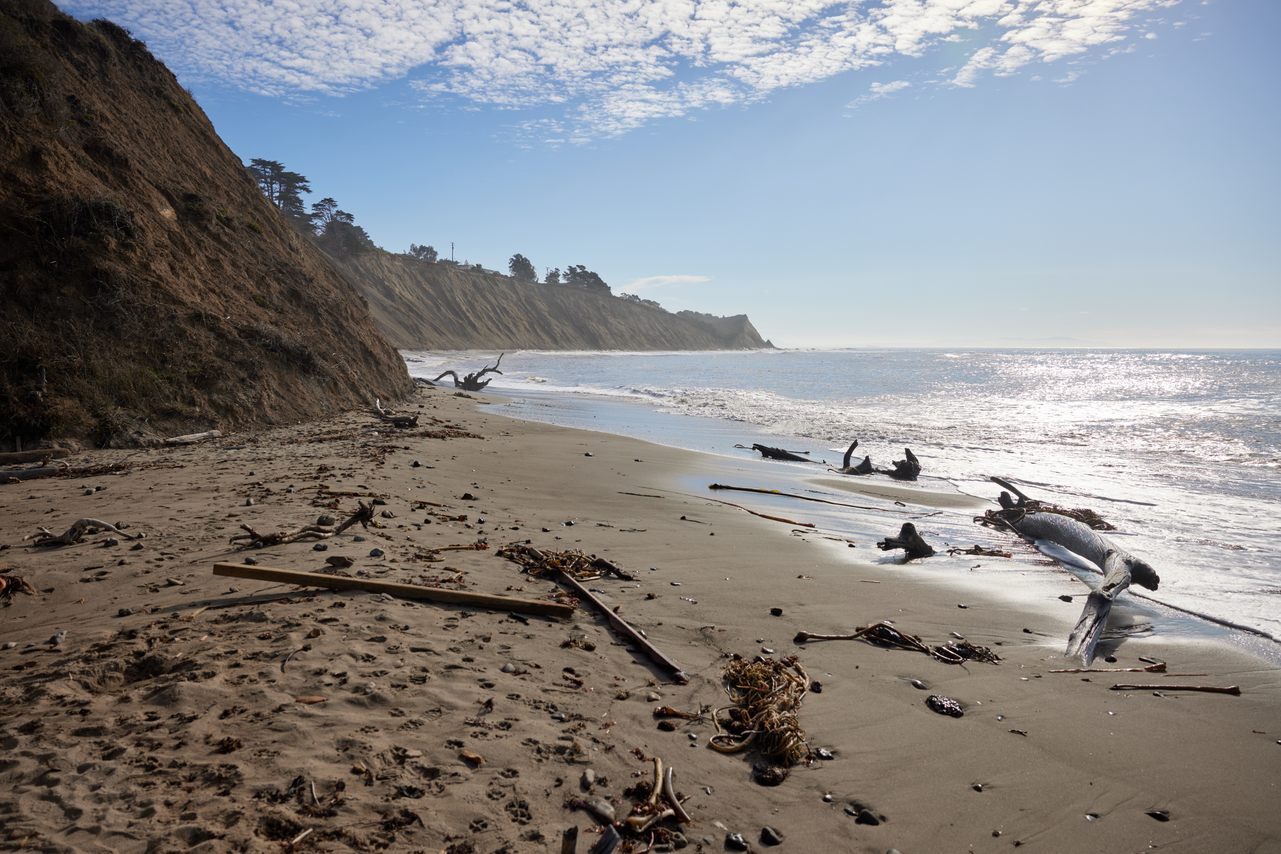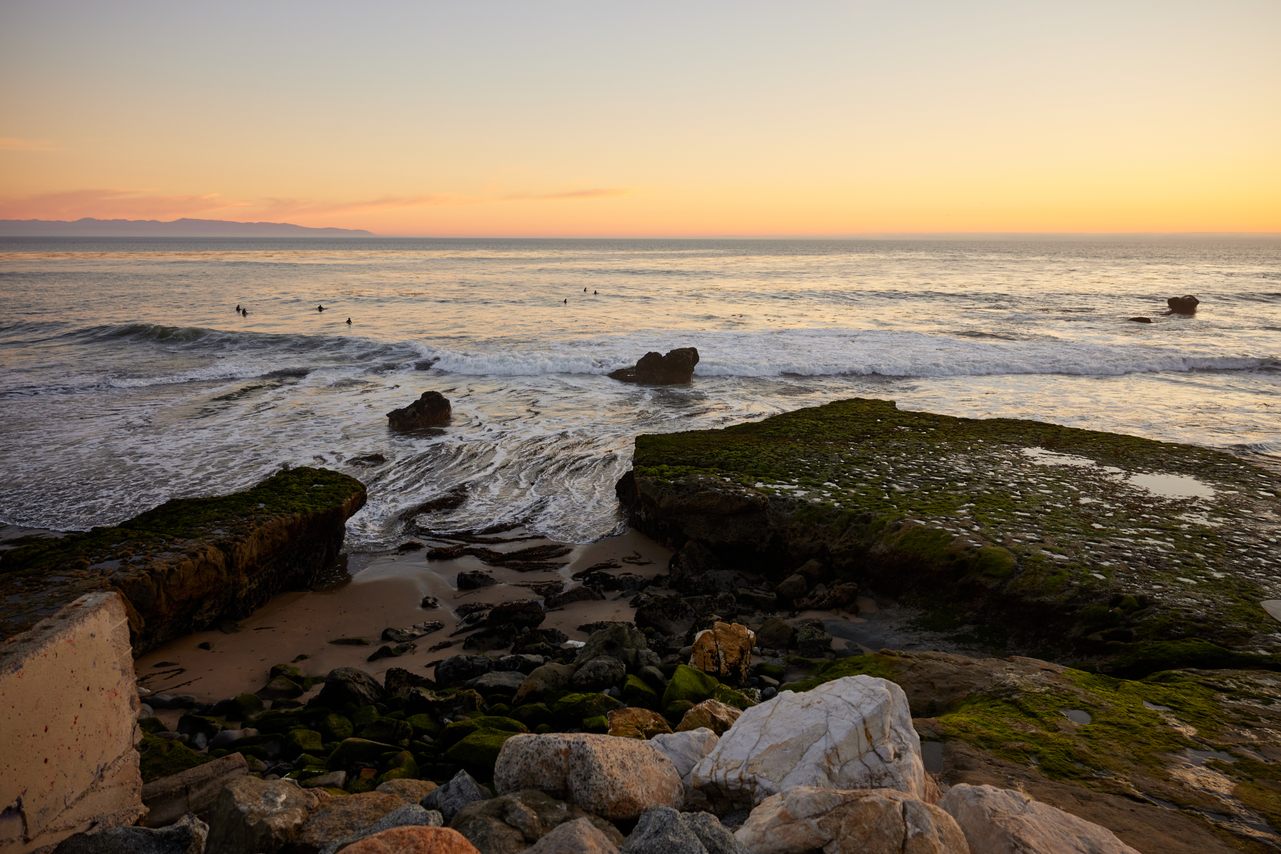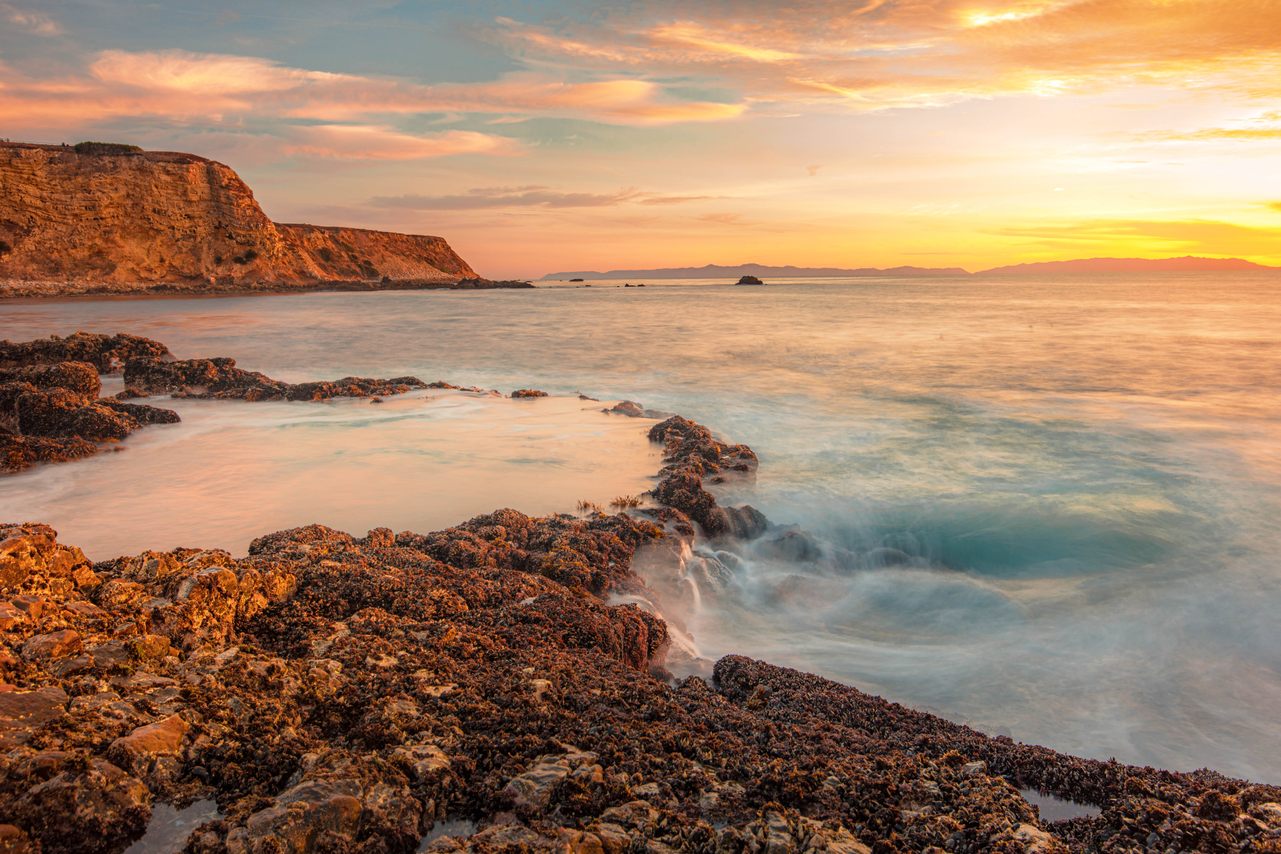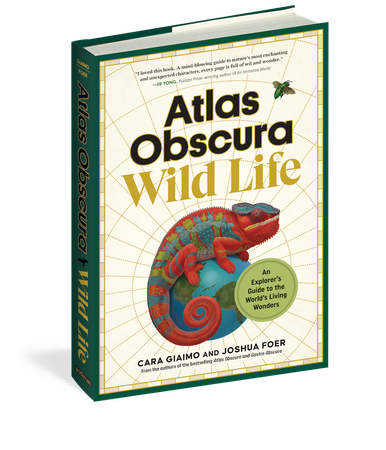
1. Duxbury Reef
At the southern tip of the Point Reyes Peninsula in Marin County you’ll find Duxbury Reef, a large reef made of shale. At low tide, the reef is home to a stunning array of tide pools, which are accented with wide swaths of deep pink, thanks to two different types of Coralline Algae. If you walk farther out into the tide—bring some good water shoes!—you’re more likely to find the more elusive Duxbury residents like colorful nudibranches and octopus. These tide pools are also home to a few species with incredible names, like the Spotted Unicorn (a sea snail) and Iridescent Algae (which glimmers blue underwater when the sun is out). Duxbury Reef is best accessed from Agate Beach in Bolinas.
Bolinas, CA 94924

2. Pleasure Point
The elusive nudibranch—a colorful sea slug that looks like a tiny oceanic dragon—is also known to pop up at Pleasure Point in Santa Cruz County. When the tide comes out here, the narrow beach along East Cliff Drive opens up into a network of tidepools. More common sightings than the nudibranch are giant green anemones, colorful sea stars, and tiny kelp crabs, which can easily blend into waving strips of seaweed. Pleasure Point is a great option for kids, as the beach is wide and flat, with no steep cliffs or drop-offs to worry about.
E Cliff Dr, Santa Cruz, CA 95062

3. Hazard Reef at Montana de Oro
Don’t worry, this reef isn’t hazardous! The trail to Hazard Reef is a one-mile hike in San Luis Obispo County that takes you along some wooden stairs and a boardwalk that will feed you into the mouth of a canyon. The name comes from someone who once owned the land and planted eucalyptus trees in hopes of selling them as lumber—hazarding as in taking a risk. There’s little risk in tide pooling here, where you’ll find the usual suspects like hermit crabs, sea stars, sand dollars, and anemones, along a long, misty beach that sits below hills and mountains that catch the sunlight beautifully. The reef—made of jagged pieces of sedimentary shale that emerge from the sea floor—is hidden at high tide, but when the water recedes, it creates beautiful pools to explore.
California 93402

4. Spyglass Beach Tide Pools
This beach on California’s central coast is part of a peaceful nature preserve in Pismo Beach, where you can enjoy a snack at one of the nearby picnic tables before embarking on your tide pool adventure. The sandy stretch of beach is hard to access at high tide, but when the water recedes a long stretch of beach opens up for wandering and tide pool peeping. Here you’ll find colorful anemones, scuttling crabs, and vibrant starfish. This is another great option for families, as the park includes playgrounds and barbecue areas.
182 Seacliff Dr, Pismo Beach, CA 93449

5. Leo Carrillo State Park
At Leo Carrillo State Park, which stretches along the Malibu coast, there is something for everyone from beachcombers, to spelunkers, to surfers and swimmers and anyone looking for a striking beach backdrop. The tide pools here contain mossy chiton, striped shore crabs, tangles of fat sea stars, mussels, and black sea hares, a.k.a. enormous slugs! And they also offer an entryway to Malibu’s dramatic sea caves, which are also best explored at low tide. With diverse tide pools, plenty of rocks to climb on, and a constantly rotating cast of surfers and wind surfers to watch, Leo Corrillo is an exciting place to explore in the state.
35000 Pacific Coast Hwy, Malibu, CA 90265

6. Golden Cove Beach
This is a rocky beach with no sand, which means plenty of pools for exploring! Just south of Los Angeles in Rancho Palos Verdes, Golden Cove is a crescent-shaped beach that traces elegant cliffs. It’s a popular scuba diving location thanks to its rich marine life, which also makes it home to some of the best tide pools in the area. While the descent to the beach is steep, the trip is worth it. One particularly large tide pool is known as Aphrodite’s Bath, thanks to its size and picturesque nature.
25 Via Del Cielo, Rancho Palos Verdes, CA 90275

7. Little Corona Del Mar
If you’re looking for tide pools with a side of sea caves in southern California, Little Corona del Mar is the spot. It is far quieter than the larger and more touristed Corona Del Mar beach just five minutes away and is home to some of the area’s best tide pools. Anemones of every shape and color are one of the big draws to these pools, which are located near a beautiful series of sea caves. The pools farther from the beach’s entrance often have a more diverse array of animals, like sea slugs and purple starfish.
Corona Del Mar, CA 92625

8. Crystal Cove State Park
This state park has four different tide pool areas, all home to a diverse population of flora and fauna like giant kelp, brittle stars, purple sea urchin, and black turban snails, whose empty shells are often reinhabited by hermit crabs. The beaches here are wide and sandy, equally ideal for lazy strolls as they are for obsessive tide pool watching. The area also has a good selection of camping options and hikes, for those looking to combine their marine biology with a bit of physical activity.
Laguna Beach, CA 92651

9. Dike Rock Tide Pools
The sandy habitat at this quiet beach in La Jolla means you’ll see juvenile fish, many types of shrimp, and blind gobies, a tiny fish native to Southern California that makes its home in ghost shrimp burrows. (The beach also features a few large rock formations that can be quite fun to climb on.) Nearby Birch Aquarium, part of UC San Diego’s institute of oceanography, offers guided tours of the Dike Rock tide pools, which is an amazing way to get expert intel on these fascinating ecosystems.
303 Coast Blvd, La Jolla, CA 92037

10. Point Loma Tide Pools
Point Loma is a hilly peninsula off of San Diego, with San Diego Bay on one side and the great sprawling Pacific on the other. The majority of the peninsula is part of the Cabrillo National Monument, meaning the land is well-preserved and not heavily developed—the Parks Service calls it “one of the best protected rocky intertidal areas in California”. In these pools you’ll find keyhole limpets, Black tegula snails, Kellet’s worms, and, when the water is especially low, spiny lobsters. The best time to visit is during the fall and winter, when the tides are at their lowest, offering more pools to observe.
Lands End Road, San Diego, CA 92106
This post is sponsored by Visit California. Click here to explore more here.

